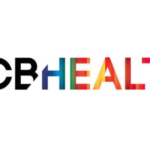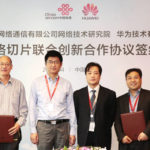Ambitions by LEGO Group Include Replacing Single-Use Disposable Plastics and Finding Recycled or Sustainably Sourced Bio-Based Materials for All Plastic Based Packaging
In 2015 the LEGO Group announced its ambition to use 100% sustainable materials in both its bricks and packaging by 2030. The company recently announced that they are aiming for 100% sustainable packaging by 2025.
Currently, the majority of LEGO packaging, by weight, is cardboard or paper-based which is recyclable, sustainably sourced and certified by the Forest Stewardship Council.
“To support our company mission, we have a Planet Promise and we have pledged to play our part in protecting the planet for future generations. Using sustainable packaging is an important part of fulfilling that promise.
“By bringing forward our ambition or sustainable packaging, we are also acknowledging the need to find better packaging solutions sooner. We’ve made good progress in the past three years, and there is still work to do,” said Tim Brooks, Vice President Environmental Responsibility at the LEGO Group.
LEGO bricks are designed to be reused and handed down through generations, but not everyone keeps their LEGO boxes and other packaging. As some of the LEGO packaging contains single-use disposable plastics, which today are not sustainable, and in some cases cannot be recycled by consumers, the company is actively taking measures to improve its packaging sustainability.
“By 2025, our aim is that no LEGO packaging parts have to end up in a landfill. Packaging will be made from renewable or recycled materials and will be easy for consumers to recycle,” added Tim Brooks.
The LEGO Group has taken several steps to improve the sustainability of its packaging:
In 2018, the company began using recycled plastic in packaging ‘blisters’ – the transparent plastic windows which allow consumers to have a sneak peek into some LEGO boxes; This year, packaging in the US and Canada started to feature the How2Recycle label promoting packaging recycling and providing US and Canadian consumers with clear guidance to responsibly recycle their LEGO packaging.
In 2017, plastic trays used in Advent Calendars were replaced with recyclable paper-pulp trays, saving up to 1 million plastic trays from going to the landfill; approximately 75% of cardboard used to make LEGO boxes comes from recycled material.
The average size of a LEGO box has been reduced by 14% over the past four years, improving transport efficiency, saving on average every year over 3,000 truckloads and 7,000 tonnes of cardboard.
All paper and cardboard used in LEGO products and product packaging is recyclable, sustainably sourced and certified by the Forest Stewardship Council.
The company’s sustainable packaging ambition focuses on finding sustainable packaging alternatives that are is renewable where 100% of LEGO boxes, bags, and special packaging are to be made from recycled or sustainably sourced bio-based materials; efficient, where the company is ongoingly exploring ways to optimise packaging, balancing consumer appeal with environmental action; and recyclable, where the company designs packaging that facilitates consumers to recycle in major markets.
LEGO was a four-time winner of the World Branding Awards, in the Toys category.



Average Rating